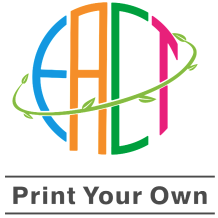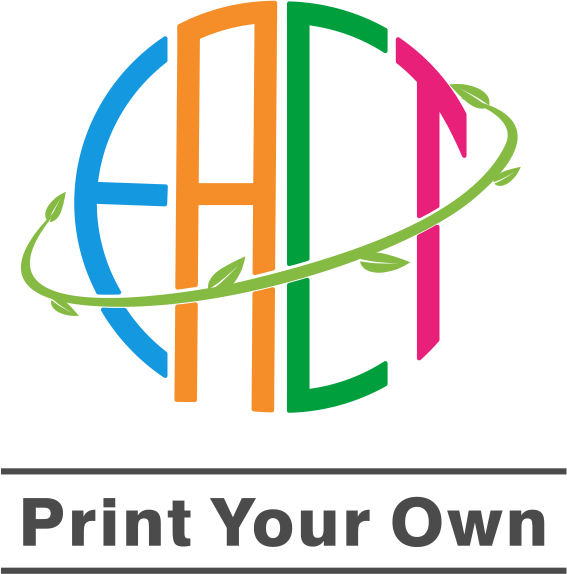In an era when environmental responsibility and creative expression must go hand in hand, a quiet revolution is unfolding in the world of textiles. Sustainable printing—leveraging eco-friendly fabrics and low-impact inks—is no longer a fringe trend; it’s fast becoming the industry’s gold standard. At CustomPrintingFabric, we’ve been watching this shift closely, excited by how it’s transforming not just what we print on, but how the fabric world thinks, breathes, and evolves.
1. The Roots of a Greener Print Revolution
The traditional textile industry has long been synonymous with heavy water usage, chemical dyes, and waste—tarnishing both our waterways and our brand reputations. In response, environmentally conscious innovators turned to sustainable fabrics like organic cotton, hemp blends, Tencel®, and recycled polyester. These materials dramatically reduce water consumption, eliminate harmful pesticides, and often utilize post-consumer waste—charting a responsible blueprint from seed to stitch.
But fabrics alone don’t tell the whole story. Printing practices themselves had to evolve. Digital printing technologies—especially water-saving dye-sublimation or pigment-based direct-to-fabric methods—allow intricate, vibrant patterns with far less resource waste than traditional roll-to-roll setups. The result? Gorgeous, intricate designs that respect the planet.
2. Breaking Myths: Performance Meets Responsibility
A common concern among creatives and brands is whether eco-friendly fabrics can deliver comparable quality—or even longevity—to conventional counterparts. Spoiler: they can. Organic cotton and hemp blends, when printed with modern low-impact pigment inks, yield sharp, durable prints that age gracefully. Moisture-wicking performance fabrics derived from recycled PET (like sporty knit bases) now achieve bold, stable color even after repeated washes.
Moreover, new biodegradable finishes and water-resistant coatings minimize synthetic chemical residues while preserving fabric versatility. At CustomPrintingFabric, we’ve seen countless examples where design integrity and sustainability reinforce each other, rather than compete.
3. The Hidden Value of True Sustainability
Sustainability isn’t merely about ticking environmental boxes—it’s about delivering long-term value to customers, the supply chain, and the planet. Brands that adopt eco-friendly printing signal a clear commitment that resonates with conscious consumers. That narrative strengthens brand identity and multiplies goodwill. A well-printed, sustainably produced dress, canvas, or promotional textile becomes more than a product—it becomes a story of mindful choice.
For independent designers and small businesses using CustomPrintingFabric, embracing eco-friendly fabrics also opens doors. Buyers from boutique shops, eco-concerned brands, or even large-scale retailers actively seek partners who forestall greenwashing and support credibility. In effect, sustainability becomes a creative and commercial advantage.
4. Innovations We’re Watching
-
Waterless Digital Printing: Advanced systems now eliminate water discharge entirely by recycling pigment residue—further shrinking footprints.
-
Plant-Based Resin Finishes: Traditional fixatives often rely on petrochemicals. New plant-based resins (think soybean or algae derivatives) provide equal—or even superior—bonding without synthetic tails.
-
Closed-Loop Recycling for Offcuts: Rather than landfill, leftover printed scraps can now be collected, reground, and respun into new yarns, especially within recycled polyester workflows.
-
Natural Dye Revival: Combining biodynamic farming with microbial mordants, some printers are reintroducing tannins and botanical dyes in commercial-scale operations—yielding muted prints with depth, story, and character.
5. Designing with Intention: Best Practices for Creatives
-
Match fabric and design thoughtfully – The drape of hemp differs from Tencel’s smooth sheen; factor the fabric behavior into your composition.
-
Choose inks aligned with your substrate – Pigment inks suit natural fibers; sublimation dyes work wonders on poly-rich blends. A mismatch can cost vibrancy.
-
Request eco-credentials – Ask for certifications like GOTS, OEKO-TEX Standard 100, or bluesign® along your material chain. Transparency builds trust.
-
Test wash samples early – Even eco-friendly finishes vary in durability; a quick garment or small fabric sample wash tells you what you need to know.
-
Tell the story – Whenever you share your printed creations—whether online or in person—mention the sustainable journey backed by CustomPrintingFabric. That narrative matters.
6. Why It Matters for CustomPrintingFabric Customers
At CustomPrintingFabric.COM, our mission is simple: to empower creators with beautiful, high-quality prints on fabrics they can stand behind—not just for their aesthetics, but for their ethics too. We’re not here to green-wash; we’re here to celebrate substance. By curating eco-friendly substrate options and supporting advanced printing methods, we offer partners the creative latitude to impress clients—and the conscience to lead with integrity.
Through thoughtful sourcing, modern technology, and a nod to both craftsmanship and conservation, CustomPrintingFabric showcases how sustainability and innovation can coexist. Our customers are realizing that eco-friendly fabrics aren’t just “better for the planet”—they’re often better on the shelf, on the skin, and in the story they tell.
Closing Thoughts
The fabric industry’s sustainable printing evolution is more than a trend—it reflects a collective shift toward responsibility, resilience, and real impact. For designers, brands, and individuals using platforms like CustomPrintingFabric, this is prime time. You can create visionary work that doesn’t cost the Earth, but enriches it—one printed yard at a time.

 USD
USD



